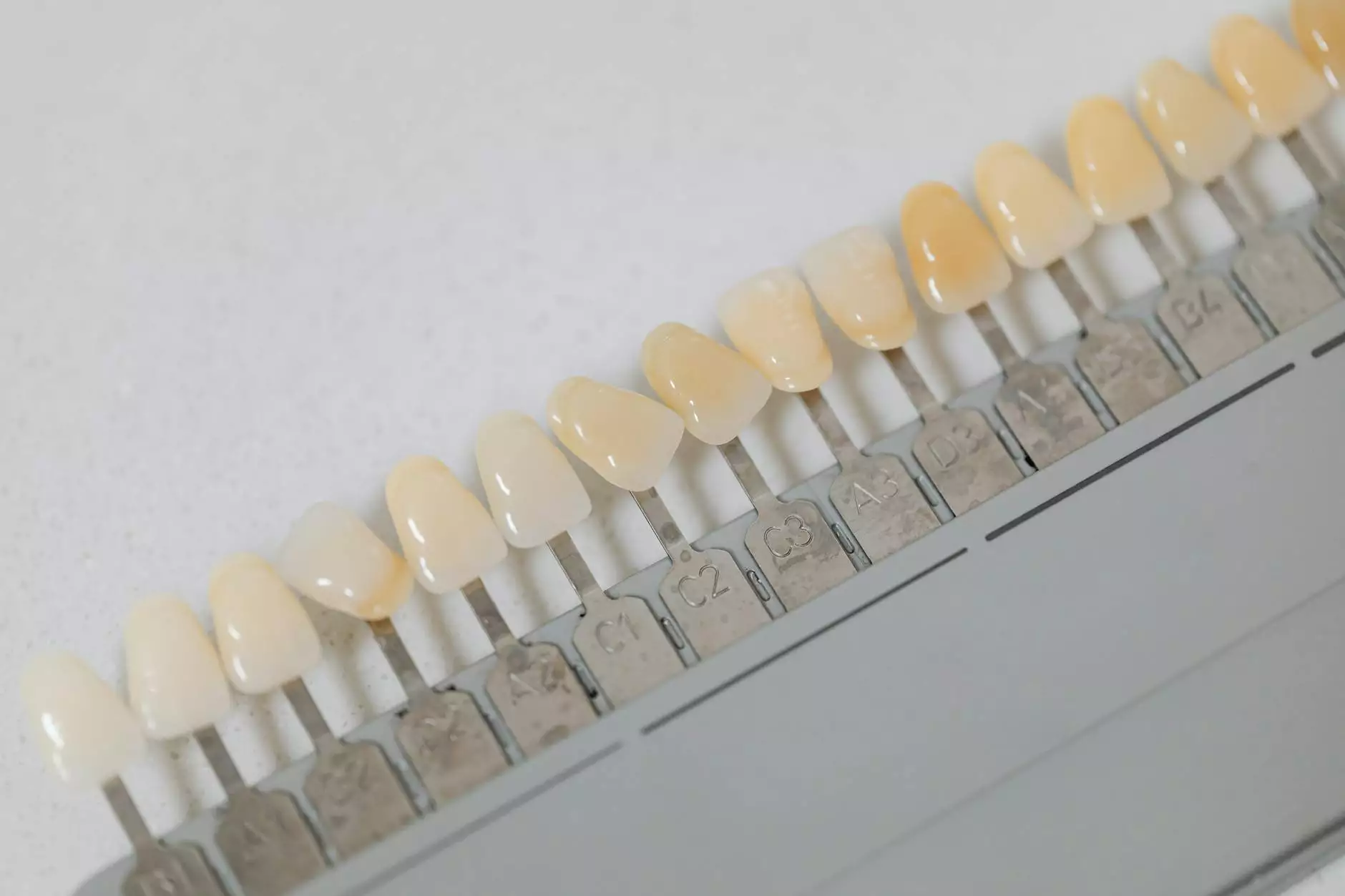Understanding Hyperpigmentation on Ankles: Causes, Treatments, and Prevention

Hyperpigmentation on the ankles is a common concern that affects many individuals, manifesting as dark patches or discoloration of the skin in that particular area. While often benign, it can raise questions regarding the underlying causes and potential remedies. This article aims to provide an in-depth exploration of hyperpigmentation on the ankles, including its causes, treatment options, and prevention strategies.
What is Hyperpigmentation?
Hyperpigmentation refers to an excess production of melanin, the pigment responsible for the color of our skin, hair, and eyes. This condition can manifest itself in various forms, including:
- Age spots: Frequently found on sun-exposed areas due to prolonged sun exposure.
- Melasma: Often triggered by hormonal changes, typically seen in women during pregnancy.
- Post-inflammatory hyperpigmentation: Resulting from skin trauma, such as cuts, acne, or eczema.
Hyperpigmentation on ankles is particularly common in individuals with darker skin tones due to the increased melanin distribution.
Causes of Hyperpigmentation on Ankles
There are several potential causes of hyperpigmentation on the ankles, each reflecting different underlying mechanisms:
1. Sun Exposure
Excessive sun exposure can trigger the melanocytes (the cells that produce melanin) in the skin to become overactive, leading to dark spots. People often neglect the lower body when applying sunscreen, resulting in localized hyperpigmentation.
2. Inflammation and Injury
Skin injuries or conditions that cause inflammation can lead to post-inflammatory hyperpigmentation. Conditions like eczema, dermatitis, or even insect bites can cause the skin around the ankles to darken as it heals.
3. Medical Conditions
Certain medical conditions, particularly vascular disorders, can also contribute to hyperpigmentation on the ankles. Issues like venous insufficiency can cause blood pooling, resulting in skin discoloration.
4. Hormonal Changes
Hormonal changes, particularly in women, can lead to melasma, affecting various body areas, including the ankles. While it's most common on the face, it can occur in other localized regions.
5. Medications
Some medications can lead to skin changes, including hyperpigmentation. Common offenders include certain antimalarials, hormonal therapies, and topical medications.
Diagnosis of Hyperpigmentation on Ankles
Diagnosing hyperpigmentation typically involves a thorough examination by a healthcare professional. They may perform the following:
- Visual Inspection: Assess the appearance and distribution of hyperpigmentation.
- Medical History: Inquire about any underlying health conditions or medications that could contribute to changes in pigmentation.
- Skin Biopsy: In rare cases, a biopsy may be performed to rule out other skin conditions.
Treatment Options for Hyperpigmentation on Ankles
There are numerous treatment options available for addressing hyperpigmentation effectively. The appropriate treatment will largely depend on the underlying cause of the discoloration. Below are some common strategies:
1. Topical Treatments
Effective for milder cases of hyperpigmentation, topical treatments may include:
- Hydroquinone: A skin-lightening agent that reduces melanin production.
- Retinoids: Vitamin A derivatives that promote skin cell turnover, helping to fade dark spots.
- Vitamin C: An antioxidant that can lighten pigmentation and brighten the skin.
- Azelaic Acid: Reduces melanin production and is also effective in treating acne.
2. Chemical Peels
Chemical peels involve applying a solution to the skin to remove its outer layers, promoting new skin growth. This method can be highly effective for targeted areas of hyperpigmentation, though multiple sessions may be required for optimal results.
3. Laser Treatments
Laser therapy can target specific pigmentation issues with precision. Different lasers are used depending on the skin type and the depth of hyperpigmentation. This method often results in noticeable improvements within a few sessions.
4. Microneedling
Microneedling involves using fine needles to create micro-injuries in the skin, promoting collagen production and helping to reduce the appearance of hyperpigmentation. This method can be combined with topical treatments for enhanced results.
5. Lifestyle Changes and Skin Care
In addition to medical treatments, adopting certain lifestyle changes can also aid in managing hyperpigmentation:
- Sunscreen Application: Regularly applying a broad-spectrum sunscreen with at least SPF 30 can prevent further darkening.
- Moisturizing: Keeping the skin hydrated can support healing and improve the overall skin texture.
- Avoiding Irritation: Choose gentle products that do not irritate the skin around the ankles.
Preventing Hyperpigmentation on Ankles
Prevention is always better than treatment. Here are some reliable strategies for preventing hyperpigmentation on the ankles:
1. Sun Protection
Wearing sunscreen daily, even in winter or cloudy conditions, is crucial. Ensure that it is suitable for your skin type and reapply every two hours if you're outdoors.
2. Early Treatment of Injuries
If you have injuries, treating them promptly with appropriate care can reduce the risk of post-inflammatory hyperpigmentation.
3. Regular Skin Check-Ups
Regular check-ups with a dermatologist can help identify any changes in your skin's pigmentation early on, allowing for timely intervention if necessary.
4. Addressing Underlying Medical Issues
If you have underlying health conditions that contribute to hyperpigmentation, managing these conditions can significantly reduce the risk. Consult your healthcare provider for personalized advice.
Conclusion
Hyperpigmentation on the ankles is a common but sometimes distressing cosmetic concern. Understanding the causes, seeking appropriate treatment, and applying preventive measures can greatly enhance the health and appearance of your skin. If you're experiencing persistent hyperpigmentation, it is always wise to consult professionals like the experts at Truffles Vein Specialists who specialize in vascular medicine and skin conditions. They can provide tailored solutions and comprehensive care for your specific needs.
FAQs About Hyperpigmentation on Ankles
1. Is hyperpigmentation on ankles harmful?
In most cases, hyperpigmentation is not harmful and is mostly a cosmetic concern. However, it can be a sign of an underlying medical condition, so it's important to consult with a healthcare professional if you're worried.
2. Can hyperpigmentation be completely eliminated?
While many treatments can significantly reduce the appearance of hyperpigmentation, complete elimination may not be possible in all cases. Consistent skincare and treatment can help achieve the best results.
3. Should I see a dermatologist for hyperpigmentation?
Yes, consulting a dermatologist is advisable, especially if the hyperpigmentation changes in appearance or if you are unsure of the cause. They can suggest the most effective treatment plan tailored to your skin type.
4. How long does it take to see improvement?
The timeline for improvement varies based on the treatment type and individual skin response. For topical treatments, you may start seeing results in a few weeks, while laser treatments may take several sessions for noticeable changes.









